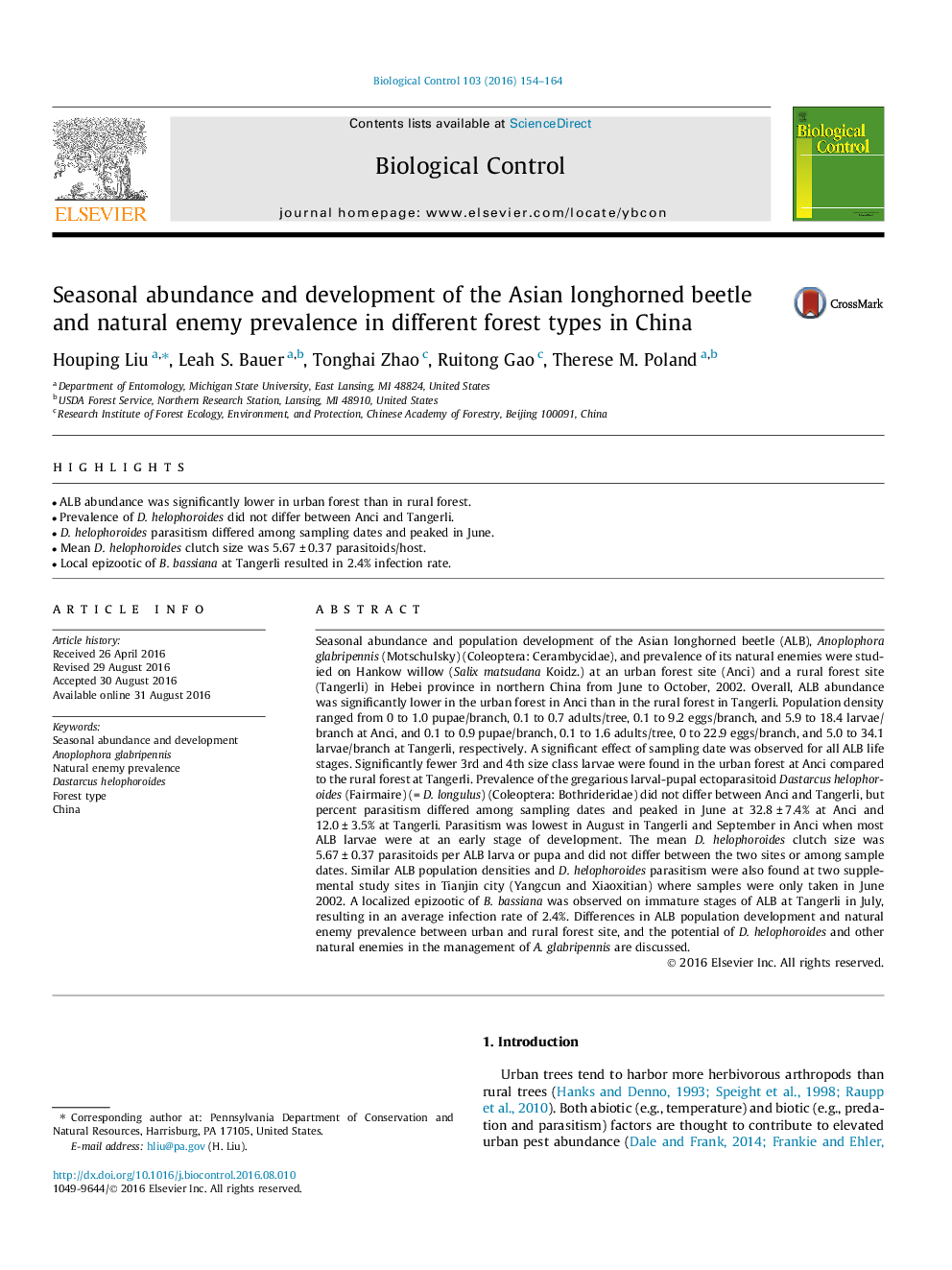| Article ID | Journal | Published Year | Pages | File Type |
|---|---|---|---|---|
| 4503546 | Biological Control | 2016 | 11 Pages |
•ALB abundance was significantly lower in urban forest than in rural forest.•Prevalence of D. helophoroides did not differ between Anci and Tangerli.•D. helophoroides parasitism differed among sampling dates and peaked in June.•Mean D. helophoroides clutch size was 5.67 ± 0.37 parasitoids/host.•Local epizootic of B. bassiana at Tangerli resulted in 2.4% infection rate.
Seasonal abundance and population development of the Asian longhorned beetle (ALB), Anoplophora glabripennis (Motschulsky) (Coleoptera: Cerambycidae), and prevalence of its natural enemies were studied on Hankow willow (Salix matsudana Koidz.) at an urban forest site (Anci) and a rural forest site (Tangerli) in Hebei province in northern China from June to October, 2002. Overall, ALB abundance was significantly lower in the urban forest in Anci than in the rural forest in Tangerli. Population density ranged from 0 to 1.0 pupae/branch, 0.1 to 0.7 adults/tree, 0.1 to 9.2 eggs/branch, and 5.9 to 18.4 larvae/branch at Anci, and 0.1 to 0.9 pupae/branch, 0.1 to 1.6 adults/tree, 0 to 22.9 eggs/branch, and 5.0 to 34.1 larvae/branch at Tangerli, respectively. A significant effect of sampling date was observed for all ALB life stages. Significantly fewer 3rd and 4th size class larvae were found in the urban forest at Anci compared to the rural forest at Tangerli. Prevalence of the gregarious larval-pupal ectoparasitoid Dastarcus helophoroides (Fairmaire) (= D. longulus) (Coleoptera: Bothrideridae) did not differ between Anci and Tangerli, but percent parasitism differed among sampling dates and peaked in June at 32.8 ± 7.4% at Anci and 12.0 ± 3.5% at Tangerli. Parasitism was lowest in August in Tangerli and September in Anci when most ALB larvae were at an early stage of development. The mean D. helophoroides clutch size was 5.67 ± 0.37 parasitoids per ALB larva or pupa and did not differ between the two sites or among sample dates. Similar ALB population densities and D. helophoroides parasitism were also found at two supplemental study sites in Tianjin city (Yangcun and Xiaoxitian) where samples were only taken in June 2002. A localized epizootic of B. bassiana was observed on immature stages of ALB at Tangerli in July, resulting in an average infection rate of 2.4%. Differences in ALB population development and natural enemy prevalence between urban and rural forest site, and the potential of D. helophoroides and other natural enemies in the management of A. glabripennis are discussed.
